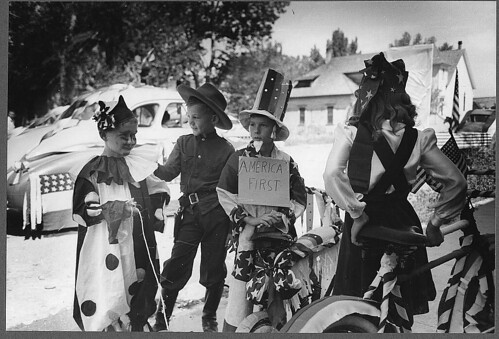¿Qué tal?

Some of you have been indicating a desire to connect our class readings to political news and issues in the "real world." I think this week is a fine opportunity to do some of that. So I'll kick us off with some discussion-starters, and you can add to this list in your own blogs (or respond to these) (or not, if you prefer).
Our readings this week address the issue of borders and belonging in the United States. Unlike last week's readings by Turner and Limerick, these readings are about contemporary American life, so they're much more concrete. They're about Latinos and Chicanos in America, how they came here, and how their presence is affecting American culture and experience. These are fascinating questions, but they can lead to heated debates too.
For example: Consider that according to 2008 census data, white Americans will constitute a minority by the year 2042. This projection comes from an article in a recent issue of The Atlantic about the election of Barack Obama, titled "The End of White America?" (Side note: the article opens with a discussion of The Great Gatsby. See how it all ties together?) In Magical Urbanism, Mike Davis draws on the 2000 census to make a similar point: "Shortly after 2050, non-Hispanic whites (25 percent of whom will be 65 or older) will become a minority group" (8). And as Davis points out in his book, many of the new "majority" of nonwhite Americans will be Latino. Moreover, this discussion extends back to the 1990s, the heyday of Patricia Limerick's multicultural American Studies movement: way back in 1993, Time magazine released a special issue on immigration, with a cover digitally created to reflect the precise multiracial character of the U.S. (click on the photo, below, to see how much of each ethnicity is in the composite and to link to the issue's contents).
 What are the consequences of these demographic shifts? Certainly, public discussion and debate about immigration, border security, and cultural difference is easy to find. In Butler County, Sherriff Richard Jones' 2006 campaign against illegal immigration caused controversy. More recently, "Wise Latina" became a popular buzzword in midsummer, when Sonia Sotomayor's nomination to the U.S. Supreme Court led to a debate about how her ethnicity might affect her judgment. (Sotomayor claimed that a "wise Latina" would likely have experience that a white man wouldn't have, and that this experience would prove useful in some cases.) President Obama is planning future immigration reforms. The New York Times has two whole pages devoted to news items related to immigration and the border patrol.
What are the consequences of these demographic shifts? Certainly, public discussion and debate about immigration, border security, and cultural difference is easy to find. In Butler County, Sherriff Richard Jones' 2006 campaign against illegal immigration caused controversy. More recently, "Wise Latina" became a popular buzzword in midsummer, when Sonia Sotomayor's nomination to the U.S. Supreme Court led to a debate about how her ethnicity might affect her judgment. (Sotomayor claimed that a "wise Latina" would likely have experience that a white man wouldn't have, and that this experience would prove useful in some cases.) President Obama is planning future immigration reforms. The New York Times has two whole pages devoted to news items related to immigration and the border patrol.I wonder how the readings by Davis, Anzaldúa, and Mora add to, or otherwise alter, your perspective on these debates. Are we nearing the "end of white America," and what does that mean? Ought we to welcome newcomers, or are we obligated to protect our borders? What does it mean to imagine the United States as a mestiza country?



No comments:
Post a Comment